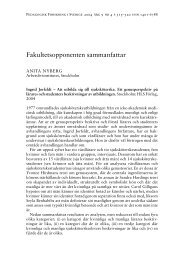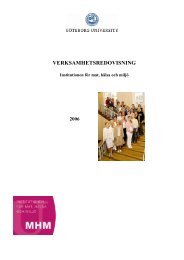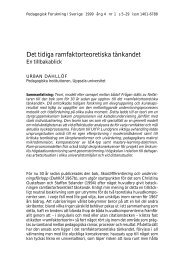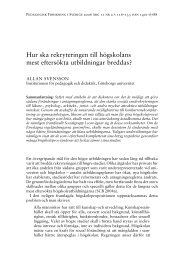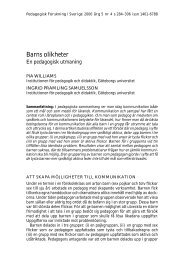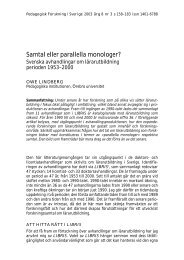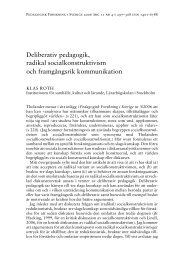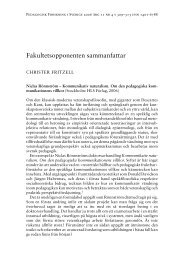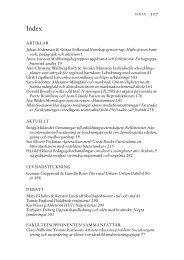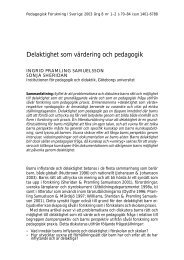University of Oslo Workshops June 29-30 Conference July 1-3 ...
University of Oslo Workshops June 29-30 Conference July 1-3 ...
University of Oslo Workshops June 29-30 Conference July 1-3 ...
You also want an ePaper? Increase the reach of your titles
YUMPU automatically turns print PDFs into web optimized ePapers that Google loves.
Track C PIRLS/TIMSS - Session 7<br />
Equity and Socioeconomic Factors in Student Achievement<br />
across Countries<br />
3 <strong>July</strong><br />
10:00-12:00<br />
Room: AK 2138<br />
Chair: Gabrielle Stanco<br />
Discussant: Dirk Hastedt<br />
Cultural and Linguistic Diversity in Reading Literacy Achievement:<br />
A Multilevel Approach<br />
Andrea Netten, National Center for Language Education, Nijmegen, the Netherlands<br />
In this study an attempt was made to identify factors that explain the variation in reading<br />
literacy achievement among fourth grade children in the Netherlands, with a focus on the<br />
differences between first and second language learners. Measures at the level <strong>of</strong> the<br />
students, the student’s class, and school were used. The data <strong>of</strong> 3549 first language<br />
learners and 208 Turkish and Moroccan second language learners who participated in the<br />
IEA Progress in International Reading Literacy Study 2006 were analyzed. Multilevel<br />
analyses were conducted and showed the level <strong>of</strong> the student to account for most <strong>of</strong> the<br />
explained variance; the level <strong>of</strong> the class also accounted for a significant part; school only<br />
accounted for a very minor part <strong>of</strong> the variance. The results <strong>of</strong> multilevel modeling showed<br />
34, 7% <strong>of</strong> the total variance in reading literacy to be explained by the entered antecedent<br />
conditions and malleable variables. Ethnicity, education <strong>of</strong> the mother and father,<br />
occupation <strong>of</strong> the mother, the amount <strong>of</strong> early literacy activities in the home, the parents<br />
attitudes towards reading, reading attitude <strong>of</strong> the student, reading self-concept, the amount<br />
<strong>of</strong> reading activities at school and the percentage second language students in a school<br />
were proven to be significant predictors <strong>of</strong> reading literacy. There were no significant<br />
interaction effects found between the subgroups <strong>of</strong> first and second language students.<br />
Key words: second language learners; reading literacy; motivation; multilevel analyses<br />
<br />
Achievement Equity by Urbanization in Latvia's Primary Education-Analysis<br />
<strong>of</strong> PIRLS 2006 and TIMSS 2007 Data<br />
Ieva Johansone, TIMSS & PIRLS International Study Center, Boston College, USA<br />
A significant problem for the Latvian education system has long been inequity in the<br />
quality <strong>of</strong> education <strong>of</strong>fered to all students across the country. A significant part <strong>of</strong> the<br />
achievement variance can be explained by performance differences between urban and<br />
rural school communities. In addition to this being a persistent trend, the gap has kept<br />
increasing over time (Geske, Grinfelds, Dedze, Zhang, 2006; Johansone, Preusch<strong>of</strong>f, 2008;<br />
Johansone, 2009). This paper focuses on the equity <strong>of</strong> student achievement by urbanization<br />
77



